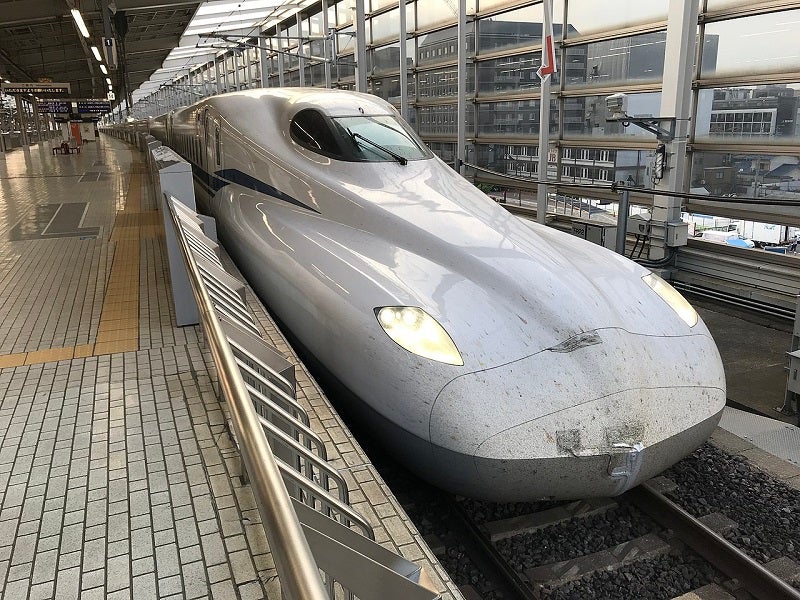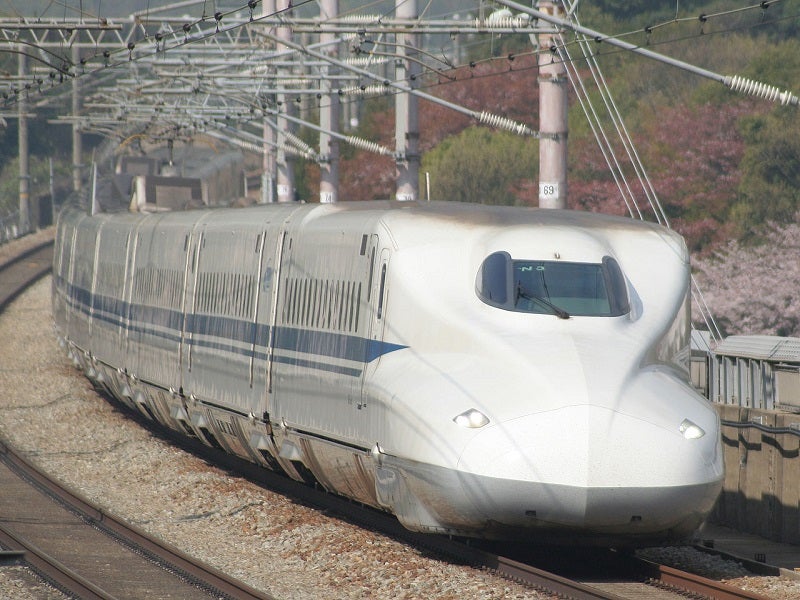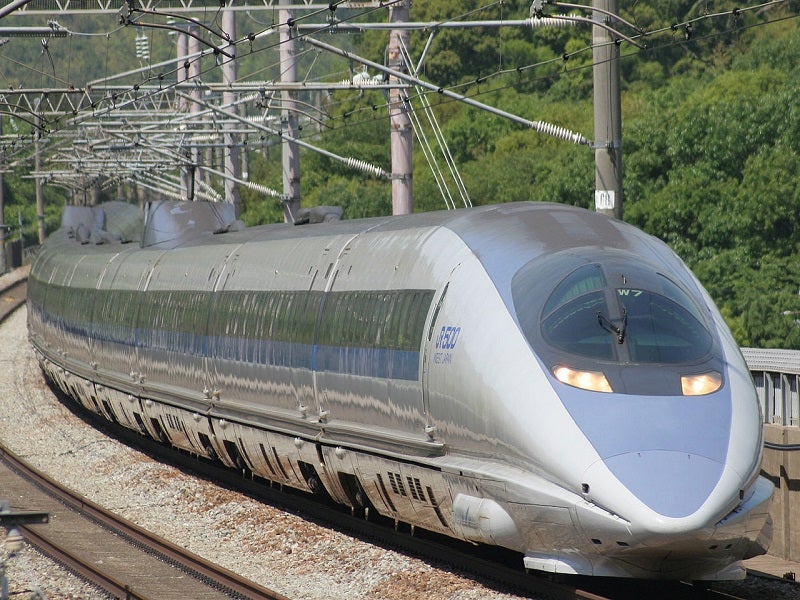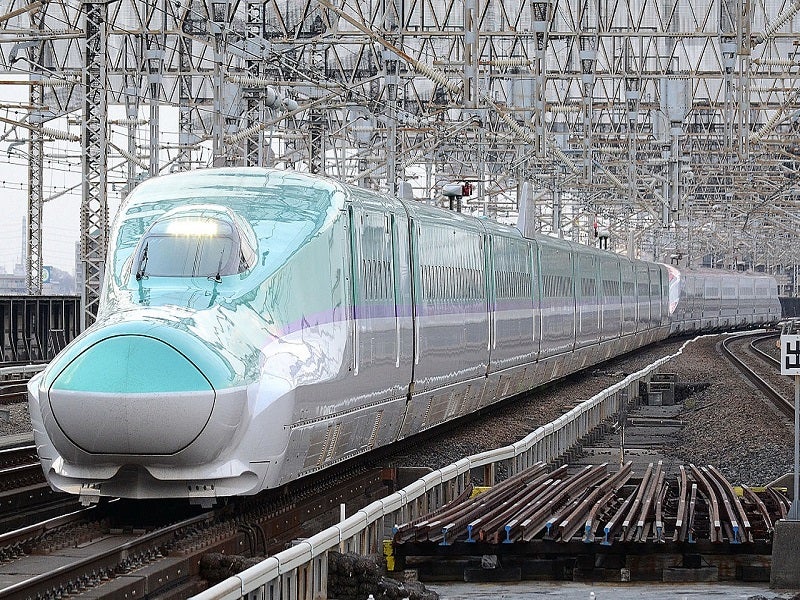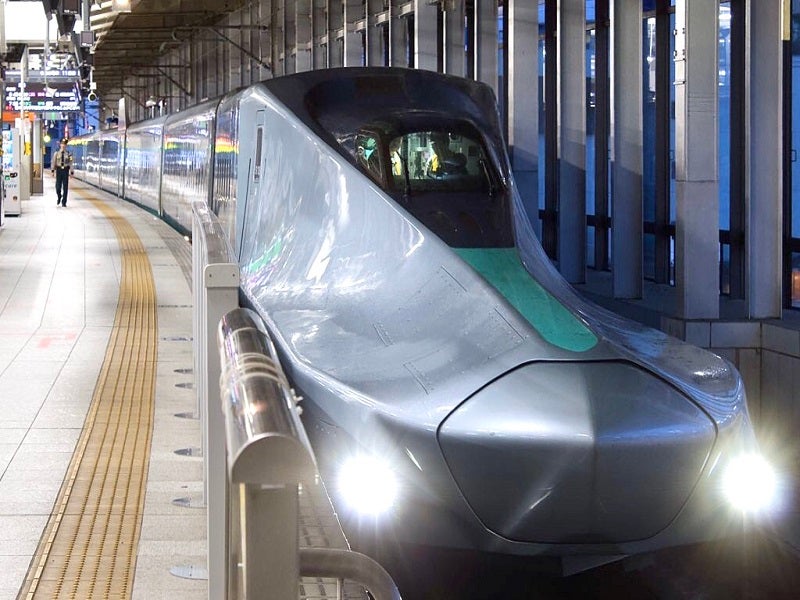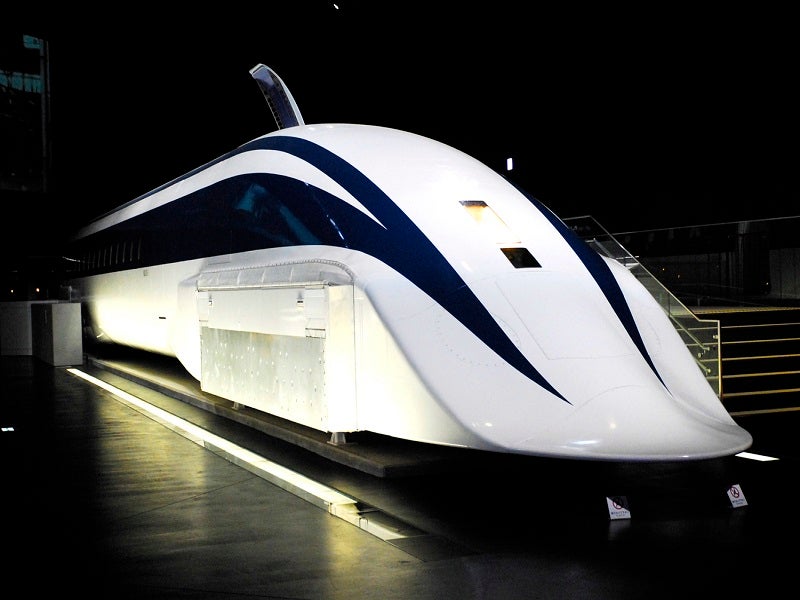Japan is where regular, high-speed railways were born. The country’s Shinkansen ‘Bullet Train’ network has been developed over more than 50 years and covers all main trunk routes.
The network centres on the capital Tokyo, with lines to the west, south, east and north of this densely-populated nation. New Shinkansen bullet train variants are still under development, maintaining the country’s pre-eminent technological position. The national Japan Railways Group (JR) operates the Shinkansen bullet train network.
Shinkansen project details
The first line to see these ground-breaking trains was from Tokyo to Osaka, the Tokaido Shinkansen, opened in October 1964. Initially, the trains ran at up to 200km/h (125mph), increased with improvements in infrastructure, signalling and maintenance.
Second-generation Shinkansen was introduced in 1972 between Shin-Osaka and Okayama, three years later being extended to Hakata. Infrastructure improvements later allowed line speeds to be increased to 220km/h. The line now connects Osaka and Fukuoka, has been improved to operate trains with line speeds of 300km/h.
The first Shinkansen to the north of the country began operating in 1982. These were the Tohoku Shinkansen, from Tokyo to Morioka and now Aomori, and the Joetsu, to Niigata. Northbound services have been expanded, with the introduction of Tohoku Shinkansen branch lines, Yamagata Shinkansen from Tokyo to Shinjo and the Akita Shinkansen between Tokyo and Akita.
Hokuriku Shinkansen line was opened in 1997 between Takasaki and Nagano, extended in 2015 to run from Tokyo to Kanazawa. The Shinkansen network also includes the Hokkaido line from Aomori to Hakodate, with extension to Sapporo scheduled for 2030. The Kyushu Shinkansen line connects Hakata Station in Fukuoka with Kagoshima.
Currently, Shinkansen trains are capable of operating at a maximum speed of 320km/h. Each Shinkansen line involves fast trains, semi-fast trains and local trains.
Shinkansen infrastructure
Operating such an intensively used, high-speed railway creates enormous strains on the infrastructure and as a result, around a third of all costs are consumed in maintenance.
Shinkansen run principally on conventional steel rail mounted on concrete sleepers but the fastest services use dedicated tracks to avoid conflict with slower trains.
Shinkansen trains run on two different gauges, 1,067mm and 1,435mm, which precludes each part of the system from using the other’s trains. However, many of the narrower gauge routes are to be converted to 1,435mm and JR East finished the conversion of its Yamagata-Shinjo route in December 1999.
All Shinkansen lines, excluding the Akita and Yamagata lines, operate on tracks exclusively built for and used by bullet trains.
Signalling and communications
Signalling is broadly fixed block, although, with such high line speeds, sections are much longer than is standard elsewhere.
A regular clock-face departure pattern for most services helps maintain a high level of reliability but, in the event of emergencies, train crews are in constant contact with their nearest control centre.
Information systems on newer variants of Shinkansen trains are proving much more reliable than previously, thanks to their use of much shorter cable lengths.
Rolling stock
Three types of trains operate on the Shinkansen routes. Nozomi are the fastest and most modern trains, the dramatically-styled 500 Series. The model is distinguished by its 15m-long power car nose, giving an extremely aerodynamic profile. The driver’s cab has a dome canopy, to allow excellent forward vision.
The 500 Series also boasts an innovative pantograph design, shaped like a wing, which also helps reduce wind resistance at high speed. Drivers’ instruments are all laid out in groups according to their function. Extensive soundproofing means there is little sensation of speed inside trains, and wind noise is at a minimum.
Japan began testing the Alfa-X (E956 Series) train, which can reach speeds of 400km/h in May 2019. This new generation train will have a 22m nose, considered to be one of the longest in trains, along with environmentally-friendly carbide power converters. The train will also be equipped with new safety measures to protect passengers from potential earthquakes. Set to operate in the Tokoku region and Hokkaido, Alfa-X will operate at speeds of approximately 360km/h during commercial functioning and is expected to start operations in 2030.
N700 series, rolled out in 2013, is currently running on the Tokaido and Sanyo lines. During trials in 2009, the series reached a maximum speed of 332km/h between Maibara and Kyoto.
Sixth-generation model of N700 series underwent a test run in July 2019 reaching a speed of 360km/h. Battery-powered N700S train will be the first completely revamped Shinkansen in more than a decade. The train will start running on the Tokaido line in 2020, with the aim to launch 40 N700S trains by 2022.
The future
Expansions of the Shinkansen bullet train network remain a priority. Major experiments are being conducted into the use of magnetic levitation (Maglev) technology, whereby magnetic power is used to levitate the vehicles and propelled by linear motors, which offers the potential for even higher speeds, by eliminating friction and vibration.
Maglev train, Linear Chuo Shinkansen, is being developed and tested as the fastest bullet train, capable of reaching speeds of 500km/h. The first part of this line is set to be completed in 2027, connecting Tokyo’s Shinagawa Station to Nagoya. The Linear train is expected to cover 286km in 40 minutes, with 86% of the line being underground. The line will see a future expansion of 153km to reach Osaka.

